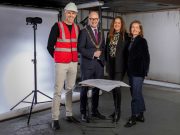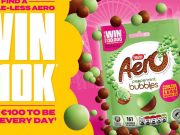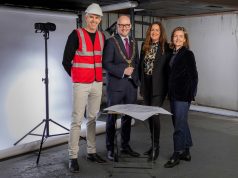 When it comes to artificial intelligence and the role it will play in the development of brands, it seems like we may have been down this road before, writes Oisín Hurst.
When it comes to artificial intelligence and the role it will play in the development of brands, it seems like we may have been down this road before, writes Oisín Hurst.
An old boss of mine was fond of saying “You can’t polish a turd, but you can roll it in glitter.” A characteristically London way of saying, bad ideas take on the patina of quality if you throw enough at them, but they’re still fundamentally, sh*t. They’ll still stink in the end. And that, in a rather odorous nutshell, is the core issue when it comes to AI and brand creation. It makes bad ideas look good. And it homogenises them in the process. This isn’t a new problem, in fact it’s an oddly familiar one.
When Adobe Photoshop became widely adopted, not simply to touch up images, but to create, distort and ‘reimagine’ imagery, we did what designers do, we played. We explored and we created. But our creativity was confined and constricted by the limitations of the software. It could “twirl” an image. It could pinch, and zoom and warp text. And that’s exactly what we did. And it looked awful. But it was new, and shiny. Like glitter.
At the same time Macromedia Freehand and Adobe Illustrator burst onto the scene and suddenly, we could create brandmarks in minutes. Not only that, but we were presented with a near endless list of typefaces, and the ability to kern and track each letter to perfection. As anyone will tell you, typefaces are catnip to designers. So, we kerned to our heart’s content.
But in doing so we focused on exactly the wrong thing. Our value as brand designers was in our thinking. In developing compelling ideas that made our work relevant and resonant. But for a time we give that up, bewitched as we were by the power to make even the worst idea look good. Sprinkling glitter on logo designs that, had we sketched them with a pencil and paper, would have been abandoned in seconds.
But worse than that, it also limited our opportunities for exploration, and frankly, for happy accidents. More often than designers would like to admit, a great idea comes from these happy accidents. But that is part of the process, a process that facilitates and enables these accidents to happen.
The same is true for strategy and brand positioning. Human interactions and digging in the data dirt is where you start to form ideas, see connections and spot oddities. These are things that most people don’t see. They are non-linear, non-predictive leaps that come from a very human, empathic space. Again, the process is where the magic happens.
So, what does any of this have to do with AI? Well in quite material ways, what AI provides for brand creation isn’t all that different. In broad terms, AI presents an almost finished solution. What follows in a process of incremental improvements that layer on top of that initial ‘offering’. Rather than expanding opportunities for exploration it tends to channel you into micromanagement.
Visual designers spend their time tweaking (let’s be honest, that is what prompt engineering is). Copywriters spend their time editing. Strategists spent their time reading summaries. And no one spends their time thinking. As AI rushes you to an end result, the creative process falls by the wayside. We become reactive, not proactive. Passengers on a technology.
But unlike other creative technologies, AI has an additional issue, one that seems likely to grow with time.
AI ‘learns’ by swallowing up massive amounts of online data. But now, it’s also the creator of much of that data. As time goes on it will start learning from itself. In effect, today’s output is tomorrow’s input. Gross.
As a result, AI outputs are more likely to homogenise. Where we used to say “That looks Photoshopped”, we’ll say “That looks/sounds/reads like AI”. Secondly, we will get really, really good at spotting AI. If you don’t believe me go back and look at some CGI movie that blew you away when you first saw it.
More likely than not it’ll look a little odd to you now. Still shiny no doubt, but undeniably artificial. Like glitter.
Oisín Hurst, Director of Brand & Creative Strategy, at WONDR by Granite





















